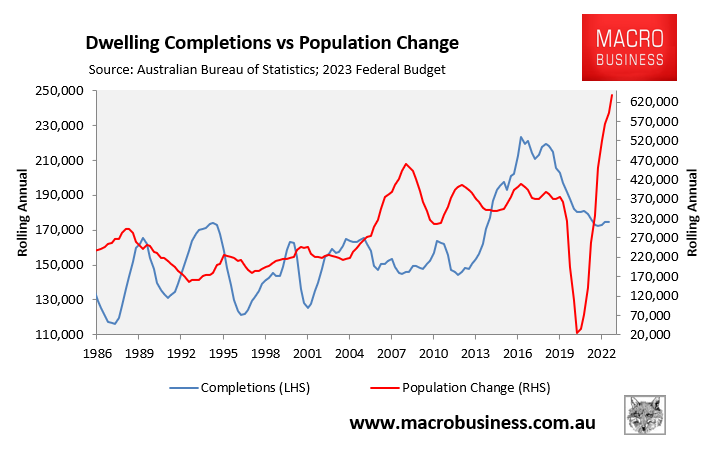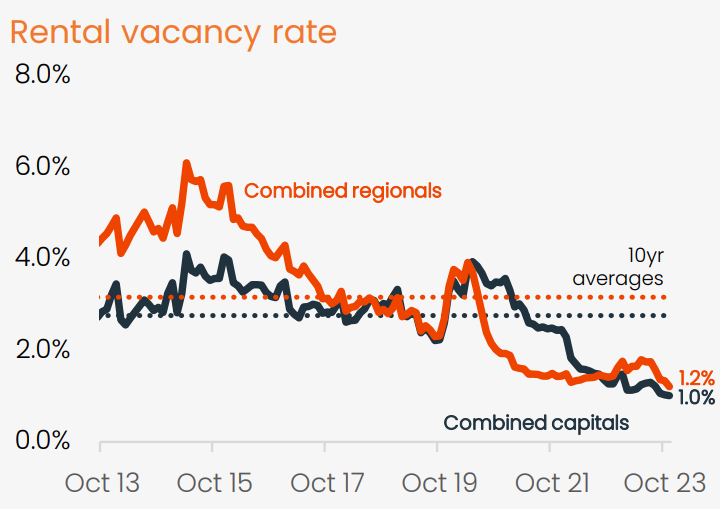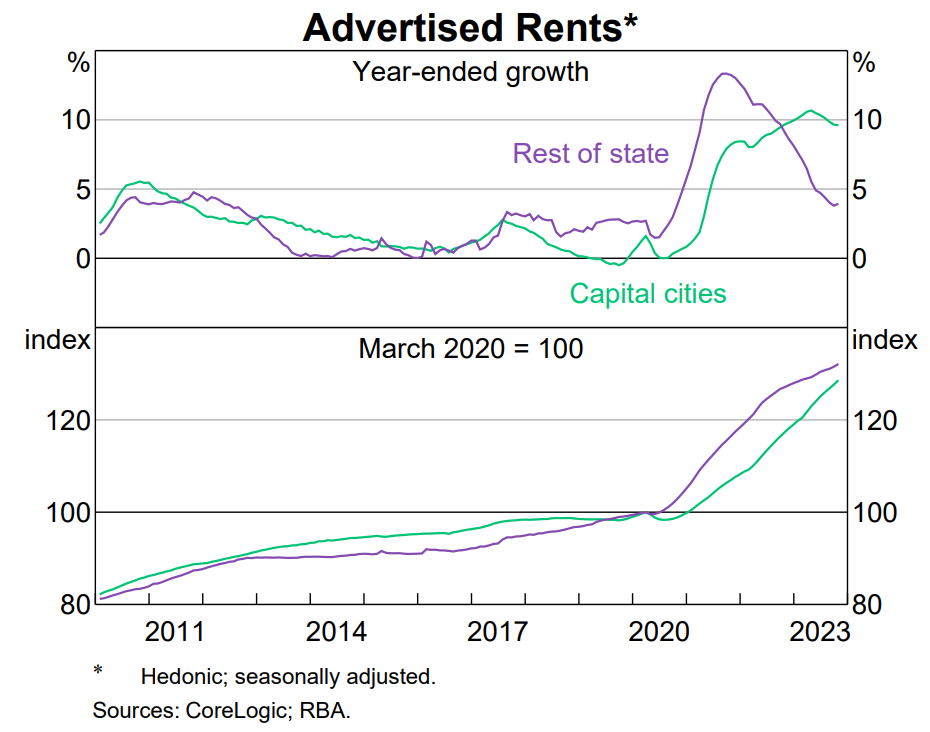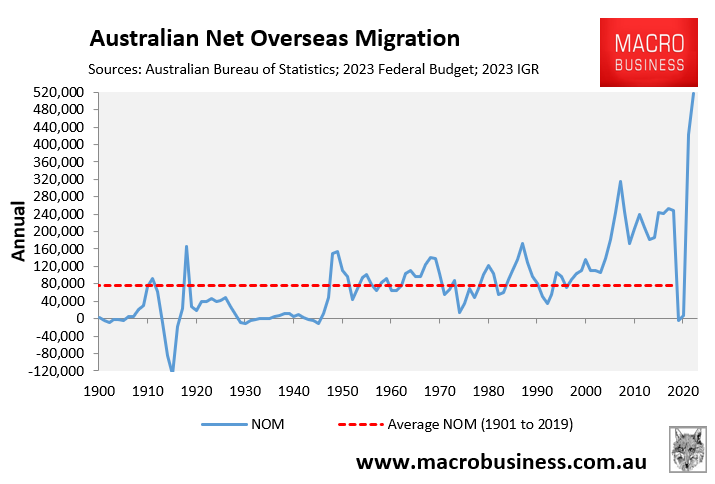Australia is clearly not building enough homes to keep pace with the immigration-driven explosion in its population.
In the year to September 2023, only 168,000 homes were added to the nation’s dwelling stock against a 624,000 increase in the population.

The forward-looking indicators are just as poor given dwelling approvals, new home sales and loans for the purchase and construction of a new home are all tracking near decade lows.
Australia’s population growth meanwhile will remain turbo-charged but should at least fall to around 500,000 in 2024.
The data is so worrying that leading Sydney real estate agent and auctioneer, Tom Panos, declared that Australia faces a “super accommodation crash” and worsening housing shortages in his end of year review of Australia’s housing market:
“We are going to have a super accommodation crash in the years to come because the government is basically allowing people to come through Tullamarine and Mascot every day without thinking where are they going to live. Are they going to be living in granny flats at the back of houses?
“I want to acknowledge the significant challenge a lot of people have now in affordable housing. People living in cars. People raising families in cars or tents under a bridge. That’s not cool”.
“That’s a responsibility of the government to ensure that people have the basic needs and necessities to live and that is housing”.
“It’s a responsibility of the government to get this right. We are so far behind where we need to be in housing construction”.
“It’s a big problem and if you read the RBA notes after each meeting, you know the increase in rents is a big driver inflation”.
“But structurally, rents are going to continue to grow because of supply and demand. There is more people that want rental stock than what there is available”.
It is hard to disagree with Tom Panos here.
Historically high population growth at the same time as housing construction is falling necessarily means that Australia’s rental market will tighten further.

Source: CoreLogic
It also means that rental inflation will remain strong, hitting lower income Australians the hardest:

It is an inequality disaster in the making that will see more Australians pushed into financial stress, into share housing, and becoming homeless.
The optimal solution is to slash the nation’s immigration intake to a level that is below the nation’s capacity to build new homes and infrastructure.

Otherwise, the housing crisis will continue to worsen and living standards will become increasingly crush-loaded.

